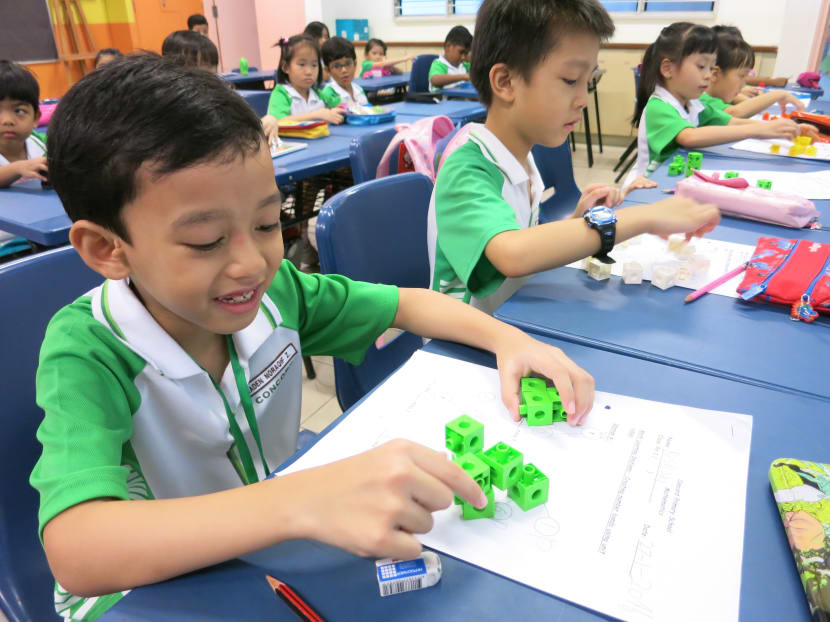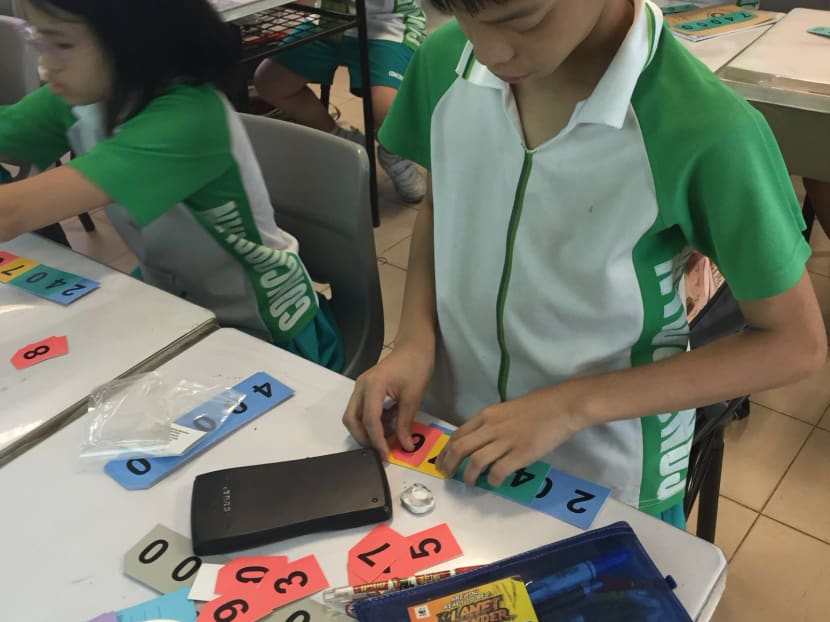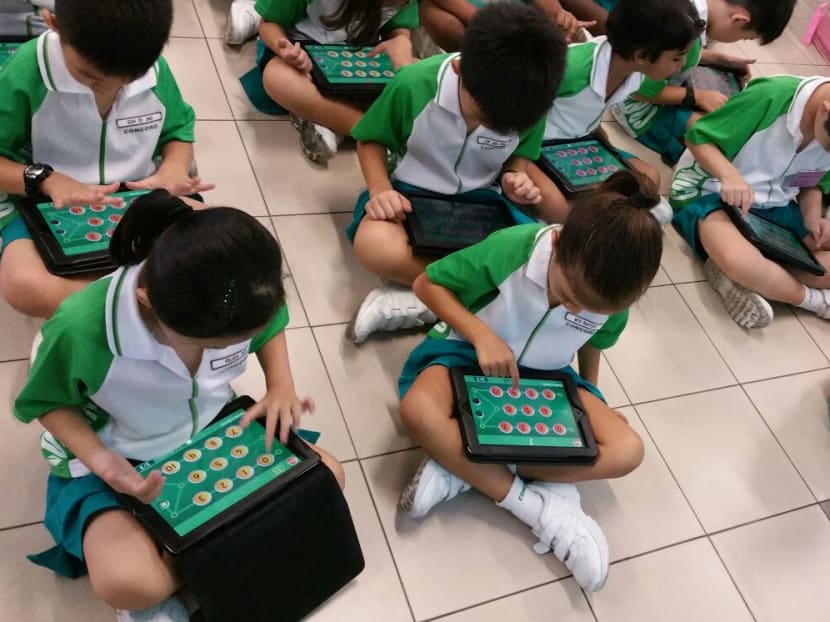Primary school maths syllabus gets refreshed
SINGAPORE — A greater focus on relating mathematics skills to real-life scenarios and more guidance for teachers on how to tap technologies to engage the “digital natives” of today are among the latest revisions to the primary school Mathematics syllabus.



SINGAPORE — A greater focus on relating mathematics skills to real-life scenarios and more guidance for teachers on how to tap technologies to engage the “digital natives” of today are among the latest revisions to the primary school Mathematics syllabus.
The changes are in line with the revised mathematics syllabus that kicked in for the Primary One cohort that enrolled into schools in 2013, who are now in Primary Four. Revisions, if any, for the Primary Five and Six syllabus have not been published.
These could also mean changes to the Primary School Leaving Examination (PSLE) math paper, but a MOE spokesperson said changes will be “minor”, without elaborating. She added: “Schools will be briefed on the format later in the year”.
The MOE typically reviews subjects’ syllabus once every six years and in the latest syllabus published on the ministry’s website, the ministry wrote that among its considerations during the review is “seeking a better balance between content and skills”.
Adding that the amount to be taught has since stabilised over the years, the ministry also wrote: “One key feature of this set of syllabuses is the explication of learning experiences, besides the learning outcomes”. “More focus has now been given to skills and competencies that will make a better 21st century learner – the process of learning becomes more important than just what is to be taught and remembered,” the ministry said.
And along with the need to engage learners of today who are “digital natives comfortable with the use of technologies and who work and think differently”, the MOE spokesperson also told TODAY that there is “more specific guidance in the syllabus where the use of technology is suggested”.
For example, this could come in the form of online games to help students master multiplication and division principles. Adding that this approach is to help pupils learn through play and develop skills such as teamwork, the ministry noted that teachers will also use other learning methods such as using rubrics or modelling.
To help students apply mathematical problem-solving and reasoning skills in real-world contexts, the MOE’s spokesperson elaborated that teachers are also given learning aids like cubes or blocks in the classroom to guide the learning process.
For syllabus reviews, the MOE also takes into consideration students’ performances in international studies such as Trends in International Mathematics and Science Study (TIMMS) and Programme for International Student Assessment (PISA) besides results of national examinations. TIMMS measures 14-year-olds while PISA ranks 15-year-olds in areas including math and literacy. The Republic’s 15-year-olds came out tops in problem-solving skills in the PISA test conducted in 2012.
However, the MOE spokesperson said these assessments do not drive syllabus but to “provide useful insights into areas where students have done well and areas where they may need greater support”.
Among educators interviewed, they said that the strong emphasis on understanding instead of simply rote-learning, as well digital learning tools, help to spur students’ interest in the subject.
Concord Primary’s head of mathematics Mdm Yap Huie Yuan, 40, said the new syllabus inspire teaches to focus more on “sense-making”.
Teachers will ask questions to elicit explanations from students on their answers. Using daily living examples such as the pouring of water into a jug, students learn about concepts such as estimation and volume while also understanding how these mathematical theories play out in real-life situations, she added.
“The students are more aware of what they are learning and not simply recalling facts…training their communication and reasoning skills as well”, said Mdm Yap, who said teachers can also identify students’ learning gaps through their answers and adjust their teaching methods accordingly.
For Junyuan Primary’s head of mathematics Wang Teck Siong, 53, said the more pervasive use of interactive digital tools and authentic learning examples help to solidify students’ understanding and “makes learning come alive”.
Her school uses the interactive whiteboard and learning aids like cubes in math lessons. Teachers also use shopping brochures, for instance, to inculcate mathematical concepts of counting money.
She observed that students are more engaged and interested in learning.
“Instead of just a blackboard (like) in the past, students can play games, draw on the interactive whiteboard, it is more exciting to learn math,” added Mrs Wang.






